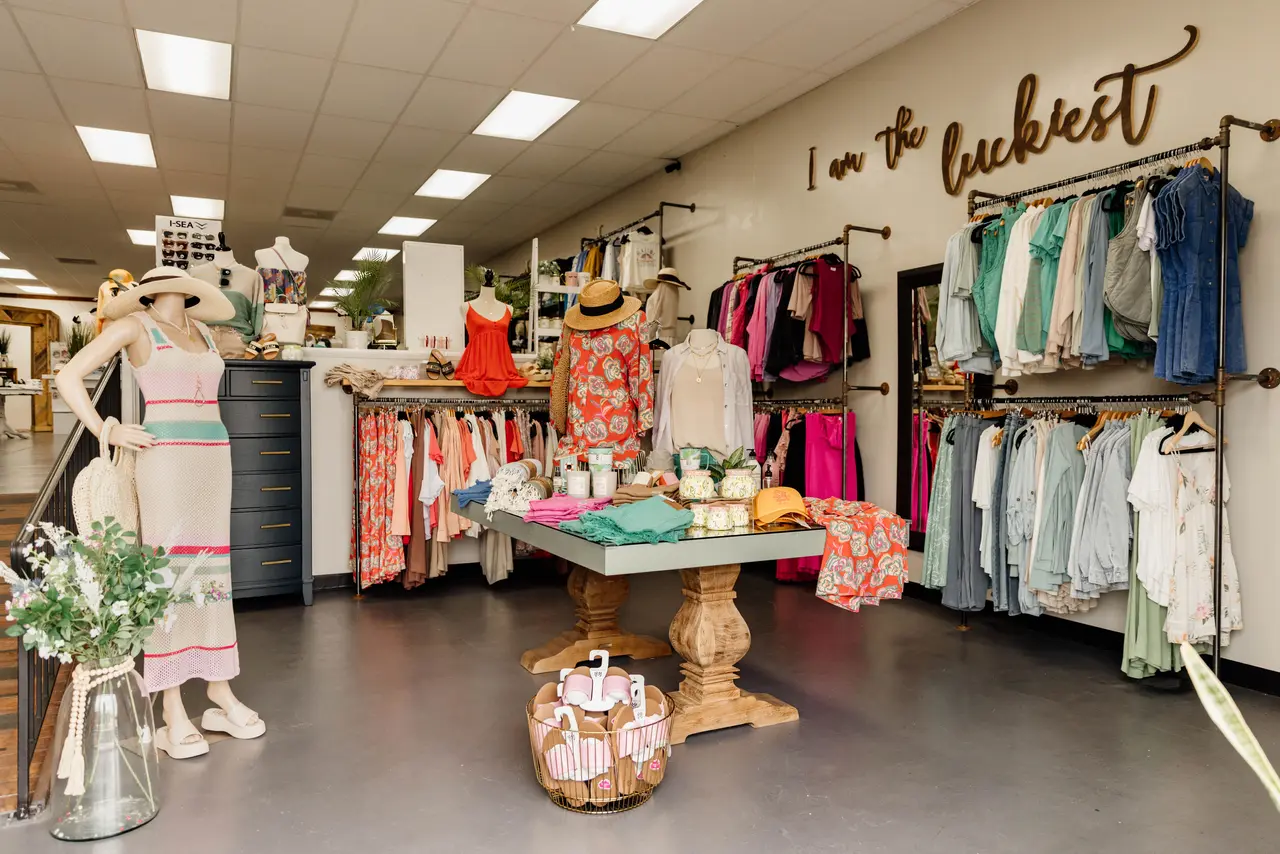A Beginner's Guide to Browsing the Boutique Fashion Scene
A Beginner's Guide to Browsing the Boutique Fashion Scene
Blog Article
Lasting Fashion: How Eco-Friendly Clothes Is Shaping the Future of Design
As the garment industry encounters increasing examination over its ecological influence, the surge of lasting fashion offers an appealing option that straightens design with eco-friendly duty. Utilizing cutting-edge products such as plant-based textiles and recycled fibers, alongside advanced methods like digital and 3D printing, designers are redefining what it means to be stylish in the modern age. Simultaneously, the expanding popularity of upcycling and second hand society is promoting a change in the direction of a round economic climate. Yet, exactly how does this motion genuinely affect the future trajectory of fashion, and what difficulties lie ahead in its widespread fostering?
Cutting-edge Sustainable Products
As the garment industry grapples with its ecological effect, innovative lasting materials have actually arised as a crucial solution for minimizing environmental impacts. Among one of the most appealing materials are those originated from natural, sustainable sources, such as natural cotton, hemp, and bamboo. These products not only reduce reliance on nonrenewable fuel sources however also decrease damaging pesticide use and water usage. Organic cotton, for instance, uses substantially less water than conventional cotton and eliminates the need for harmful chemicals, thereby maintaining dirt health and wellness and biodiversity.
In addition to plant-based materials, advancements in biofabrication have actually brought about the advancement of lab-grown fabrics. Mycelium leather, stemmed from mushroom roots, offers a versatile and biodegradable choice to pet natural leather. Its manufacturing leads to considerably lower carbon exhausts and water use, making it a much more sustainable option for style developers looking for to align with environment-friendly practices.
Recycled materials are additionally acquiring grip, with polyester made from recycled plastic bottles standing for a significant advancement. This development not only draws away plastic waste from garbage dumps and oceans however likewise minimizes energy usage contrasted to creating virgin polyester. Together, these products highlight the capacity for a more lasting apparel industry, leading the way for environmentally conscious layout and production.
Eco-Conscious Manufacturing
Building on the developments in lasting materials, the style sector is also re-evaluating its production procedures to even more lower environmental effect. Trick strategies include minimizing water intake, reducing carbon discharges, and removing hazardous chemicals.
One more essential aspect is the reduction of poisonous chemicals traditionally utilized in coloring and ending up fabrics. Eco-conscious manufacturers are moving in the direction of plant-based dyes and waterless dyeing modern technologies, which not only protect regional ecological communities yet also enhance worker security. Technologies like electronic printing lower fabric waste and energy usage, providing a cleaner option to typical approaches.
With the innovation of blockchain modern technology, business can now provide thorough understandings into their supply chains, ensuring eco pleasant and ethical techniques at each action. As the demand for eco-conscious items grows, manufacturers are urged to innovate, ensuring that the future of style is both lasting and stylish.
The Surge of Upcycling
Upcycling, a transformative method in lasting fashion, involves artistically repurposing discarded products into brand-new, premium items. This ingenious approach not just reduces waste but additionally reduces the need for resources, thereby minimizing the ecological influence of clothes manufacturing. By rebuilding and reimagining existing items, developers and fashion brands have the ability to infuse originality right into their collections while promoting ecological obligation.

In addition, the upcycling activity has empowered independent developers and small businesses, that usually lead in advancement because of their agility and creative thinking. By exploiting on the plentiful schedule of unused products, these entities add to a circular economic situation, demonstrating that fashion can be both sustainable and fashionable. With upcycling, the industry takes substantial strides towards a more liable and mindful future.
Thrift Culture's Impact
The expanding thrift society substantially reshapes the landscape of lasting fashion, stressing the significance of conscious usage. This social shift urges consumers to welcome used clothing, consequently reducing the need for new garment production and decreasing environmental influence. Thrift buying not just prolongs the lifecycle of apparel but additionally lowers the carbon footprint linked with manufacturing, delivering, and getting rid of garments.
An essential facet of second hand culture is its democratization of fashion. By supplying a wide variety of designs from various ages at budget friendly prices, thrift shops make style accessible to a wider target market. This access fosters a sense of uniqueness and creative thinking, as customers mix and suit one-of-a-kind pieces to curate customized wardrobes without adding to the rapid style cycle.
Moreover, thrift culture promotes circularity in vogue, lining up with the principles of a circular economic climate. By recirculating garments, the cycle of waste is interrupted, and resources are conserved. This practice supports a shift from a linear "take-make-dispose" model to a much more sustainable framework. As more designers and consumers welcome thrift society, the fashion business is obliged to adjust, incorporating lasting practices to fulfill the expanding need for eco-conscious options.

Future Trends in vogue
Fashion's evolution is increasingly shaped by sustainability-driven initiatives and technical advancements. One more tips here prominent fad is the surge of digital style, where online garments can be put on in enhanced fact settings, significantly reducing textile waste.
In addition, the assimilation of blockchain modern technology supplies brand-new possibilities in transparency and traceability, enabling customers to validate the sustainability qualifications of their clothes. boutique fashion. This ensures accountability in supply chains and advertises honest sourcing practices. 3D printing is yet an additional advancement that assures to reinvent making procedures by making it possible for on-demand production, consequently decreasing excess stock and waste
As why not try these out these modern technologies mature, they are positioned to transform the style landscape, merging design with sustainability. The future of style, for that reason, lies in a smooth mix of modern technology, development, and eco-friendly obligation.
Verdict
The transformation of the garment industry via sustainable techniques indicates a pivotal change towards environmental responsibility. The integration of innovative products, eco-conscious production techniques, and the embracement of upcycling and second hand society emphasizes a commitment to minimizing environmental impacts. As these practices acquire momentum, they redefine the sector's story by prioritizing moral and lasting choices. This advancement not only aligns style with ecological sustainability but also sets a precedent for future patterns concentrated on duty and technology.
As the fashion sector faces enhancing analysis over its ecological impact, the increase of lasting style offers an appealing option that straightens design with ecological obligation.As the fashion market grapples with its ecological influence, innovative sustainable products have emerged as a critical service for minimizing eco-friendly impacts. With each other, these products emphasize the possibility for an extra lasting style industry, leading the means for eco aware design and manufacturing.
Building on the developments in sustainable materials, the directory fashion industry is also re-evaluating its manufacturing processes to even more decrease environmental impact. boutique fashion.Upcycling, a transformative method in sustainable fashion, involves creatively repurposing discarded materials right into brand-new, high-quality items
Report this page